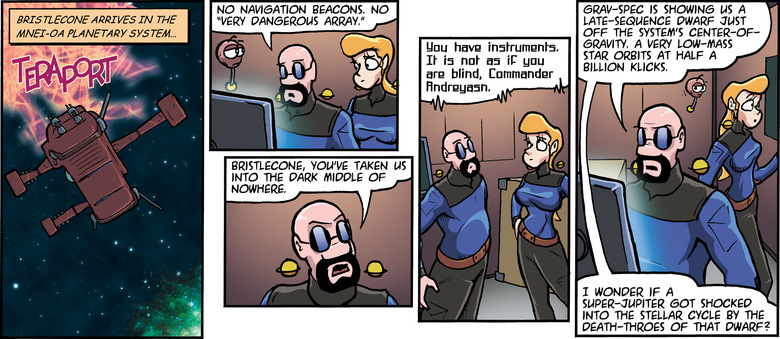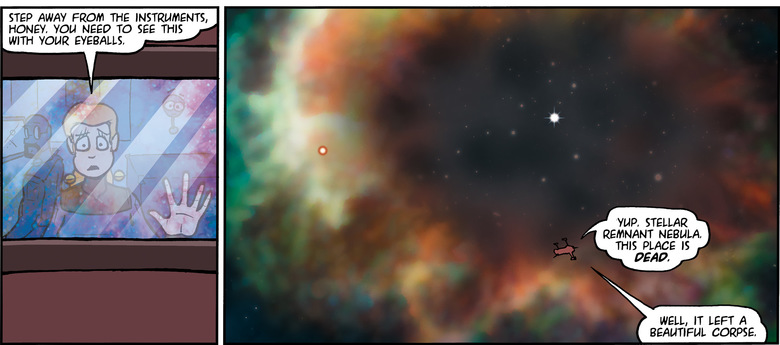

Note: as even primitive, 21st-century astronomers will be quick to point out, humans do not see reds, greens and blues when looking at a stellar remnant nebula (or if we do see those colors we don't really notice them.) The gorgeous colors we associate with these structures are introduced during image processing. They are exaggerations based on the different emission and reflection spectra of the materials present in the nebula.
Generations of humans grew up believing these areas in space to be wildly colorful, resulting in widespread disappointment when they finally got to take their mark I human eyeballs with them to the stars. Ever since the early 22nd century's astrotourism crash, starship windows (and comic strip panels) have been imbued with smart filters that mimic what astronomers were doing in the 20th and 21st centuries. Even exosuit visors are treated in this way.
31st-century humans might not be looking at the universe through rose-colored glasses, but there is an H-alpha boost in there somewhere.